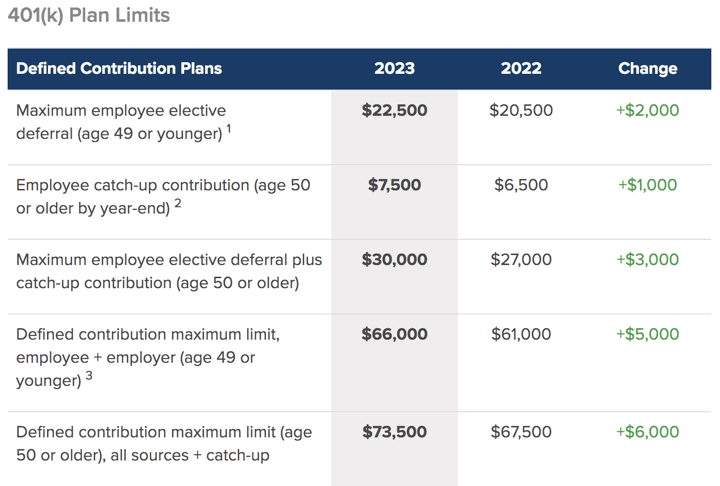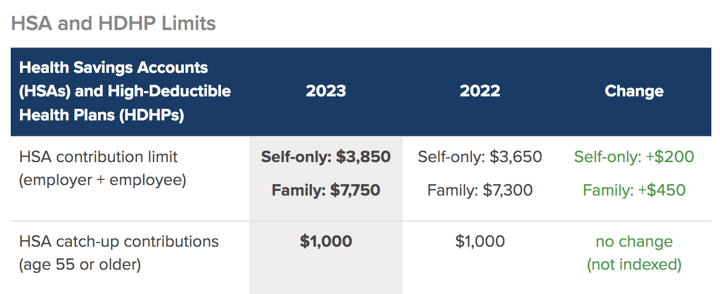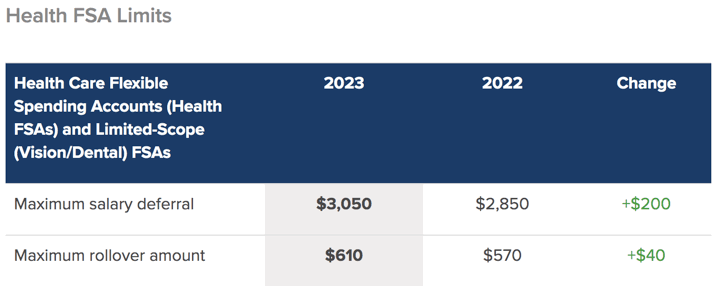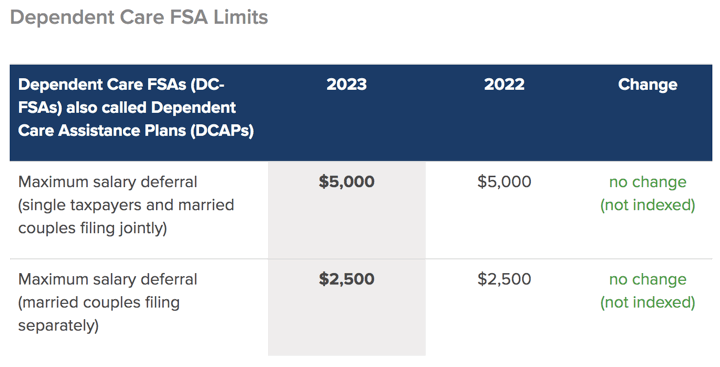 The beginning of the year is also a good time to check on the new annual contribution limits for retirement and benefit accounts, many of which are indexed to inflation. Our income has been quite variable these last few years, so I regularly adjust our paycheck deferral percentages based on expected income for the year. I still try to max things out if I can, or at least stay on pace to do so. This 2023 SHRM article has a nice summary of 2023 vs. 2022 numbers for most employer-based retirement and benefit accounts.
The beginning of the year is also a good time to check on the new annual contribution limits for retirement and benefit accounts, many of which are indexed to inflation. Our income has been quite variable these last few years, so I regularly adjust our paycheck deferral percentages based on expected income for the year. I still try to max things out if I can, or at least stay on pace to do so. This 2023 SHRM article has a nice summary of 2023 vs. 2022 numbers for most employer-based retirement and benefit accounts.
401k/403b Employer-Sponsored Accounts.

For example, I would break down the applicable limit down to monthly and bi-weekly amounts:
- $22,500 annual limit = $1,875 per monthly paycheck.
- $22,500 annual limit = $865.38 per bi-weekly paycheck.
The higher maximum limits are useful are for those folks that have the ability to contribute extra money into their 401k accounts on an after-tax basis (and then potentially perform an in-service Roth rollover), or those self-employed persons with SEP IRAs or Self-Employed 401k plans.
If you are contributing to a pre-tax account instead of a Roth, you could also use a paycheck calculator to find the detailed impact to your after-tax “take home” pay.
The investment options in 401k plans have also improved on average steadily over the years with lower fees and costs, allowing your money to compound even faster.
Traditional/Roth IRAs. The annual contribution limits are up $500 from last year, now $6,500 with an additional $1,000 allowed for those age 50+.
- $6,500 annual limit = $541.67 per monthly paycheck.
- $6,500 annual limit = $250 per bi-weekly paycheck.
Most brokerage accounts (Vanguard, Fidelity, M1 Finance) will allow you to set up automatic investments on a weekly, biweekly, or monthly basis. As long as you have enough money in your linked checking account, the broker will transfer the cash over and then invest it on a recurring basis. You may even be able to sync it to take out money the very same or next day as when your paycheck hits.
Health Savings Accounts are often treated as the equivalent of a “Healthcare IRA” due the potential triple tax benefits (tax-deduction on contributions, tax-deferred growth for decades, and tax-free withdrawals towards qualified healthcare expenses). This assumes that you have a high-deductible health insurance plan (more popular every year as they are cheaper for employers too), you can cover your current healthcare expenses out-of-pocket, and you can still afford to contribute to the HSA. Up a little for 2023.

Healthcare Flexible Spending Accounts are still an commonly-available option for others. Up a little for 2023.

Dependent Care FSAs are easy tax savings if you have children in daycare and/or preschool. These are not indexed to inflation.

Even if you aren’t hitting the limits, just increasing your salary deferral contribution rate 1% higher than last year can make a substantial difference if you keep it up. Simple evergreen advice. The easiest way for me not to eat potato chips is not the have them in the house. (Looking at you, Costco bag of Himalayan Salt Kettle Chips…) The easiest way to make sure you don’t spend the money that you want to invest, is to never have it touch your bank account.